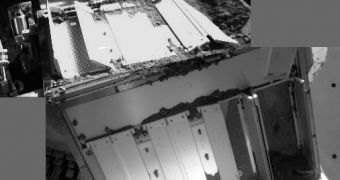It seems that people knew from the very beginning that the doors of the Phoenix Mars Lander's Thermal and Evolved Gas Analyzer (TEGA) instruments were flawed from the design phase. This gave scientists a lot of headaches during the extended mission and, if they had been designed correctly in the first place, perhaps experts wouldn’t have wasted so much time sidestepping the errors and more scientific goals would have been achieved.
The difference was made by a thin retracting cover aimed at preventing the contamination of Martian samples by Earth-based microbes. During TEGA tests, a team led by instrument chief Bill Boynton discovered that the bottom Brackets of the cover were larger by the size of a human hair, but that was enough in order to prevent the doors from operating properly. The team adjusted the design and sent the new plans to the manufacturing company, Honeybee Robotics in New York.
But somehow the new parts were built based on the previous flawed designs, and, even worse, when they came back in, the Tucson team did not perform thorough checks of the new version after having installed it. "They should've caught it and we should've caught it, but neither of us did," shared Boynton, quoted by Nature.
Secondly, after the Phoenix mission had been going on for approximately a month, by the end of June, NASA, frustrated by the number of unfortunate events – including the TEGA doors – decided to cease collecting TEGA samples and aim at obtaining ice samples. Although the results of this effort have eventually proved to be worthwhile, this caused the mission to waste over a month of the devices’ precious and little power on getting the ice sample inside the instrument. It came as a double blow when this initiative ultimately failed, while no other important research had been performed.
But with so many scientific missions gathering up at the horizon, perhaps this will serve as a tough lesson for the space agencies and robotic companies that plan to have their devices operating flawlessly on alien worlds or remote environments.

 14 DAY TRIAL //
14 DAY TRIAL //